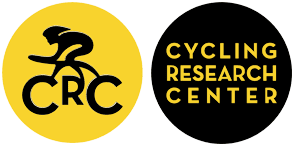Do We Need to Make the Sport of Road Cycling SafeR? Translating Research into Injury Prevention Practice (TRIPP) Framework for Road Cycling
DOI:
https://doi.org/10.28985/1324.jsc.06Keywords:
Rider Health, injury prevention, RiskAbstract
Competitive road cycling is currently experiencing an epidemic of injuries with a growing concern for rider health and safety as we progress through 2024. Team principals/owners to pen open letters raising concerns about rider welfare, with Team INEOS owner, Sir Jim Ratcliff, calling on the ‘governing bodies’ to take “real action”. Injury epidemiology research in sports medicine is one of the cornerstones of injury prevention. Many of the top-tier professional sports have organization-driven surveillance systems in place. The World Body for Cycling, UCI, published the 2030 agenda, highlighting the drive to “promote and support research in cycling epidemiology and medicine, especially for the benefit of lesser-known disciplines (epidemiology of medical and trauma pathologies)”. The UCI has recently formed SafeR (for SafeRoad cycling), a specialist entity to oversee all aspects of cycling safety, like what has been seen in Formula 1 since the early 1990s. For the first time, the sport will have a dedicated safety body whose sole concern is to make the sport safer, reducing the risks to riders and spectators whilst losing none of the thrill of racing. Whilst all these efforts are extremely positive for the sport of cycling, in the absence of surveillance data on the prevalence and risk of injuries incurred during racing, the evidence to support such changes remains solely narrative. Everyone involved in the sport has a role to play in safety. This editorial highlights the importance of the UCI, SafeR, the CPA and athletes to engage with injury epidemiology researchers to understand the injury risk profiles of the sport, to then develop injury prevention recommendations' from this data and inform the implementation of them. Collectively this will be the first step in allowing governing bodies/professional leagues to begin to identify the risk factors to injury, provide targeted education at acknowledging the socioecological context of injuries in cycling and create a proactive environment around improving athlete health by reducing injury risk.
Downloads
Published
How to Cite
Issue
Section
Copyright (c) 2024 Journal of Science and Cycling

This work is licensed under a Creative Commons Attribution-NonCommercial-NoDerivatives 4.0 International License.
Authors contributing to Journal of Science and Cycling agree to publish their articles under a Creative Commons CC BY-NC-ND license, allowing third parties to copy and redistribute the material in any medium or format, and to remix, transform, and build upon the material, for any purpose, even commercially, under the condition that appropriate credit is given, that a link to the license is provided, and that you indicate if changes were made. You may do so in any reasonable manner, but not in any way that suggests the licensor endorses you or your use.
Authors retain copyright of their work, with first publication rights granted to Cycling Research Center.






